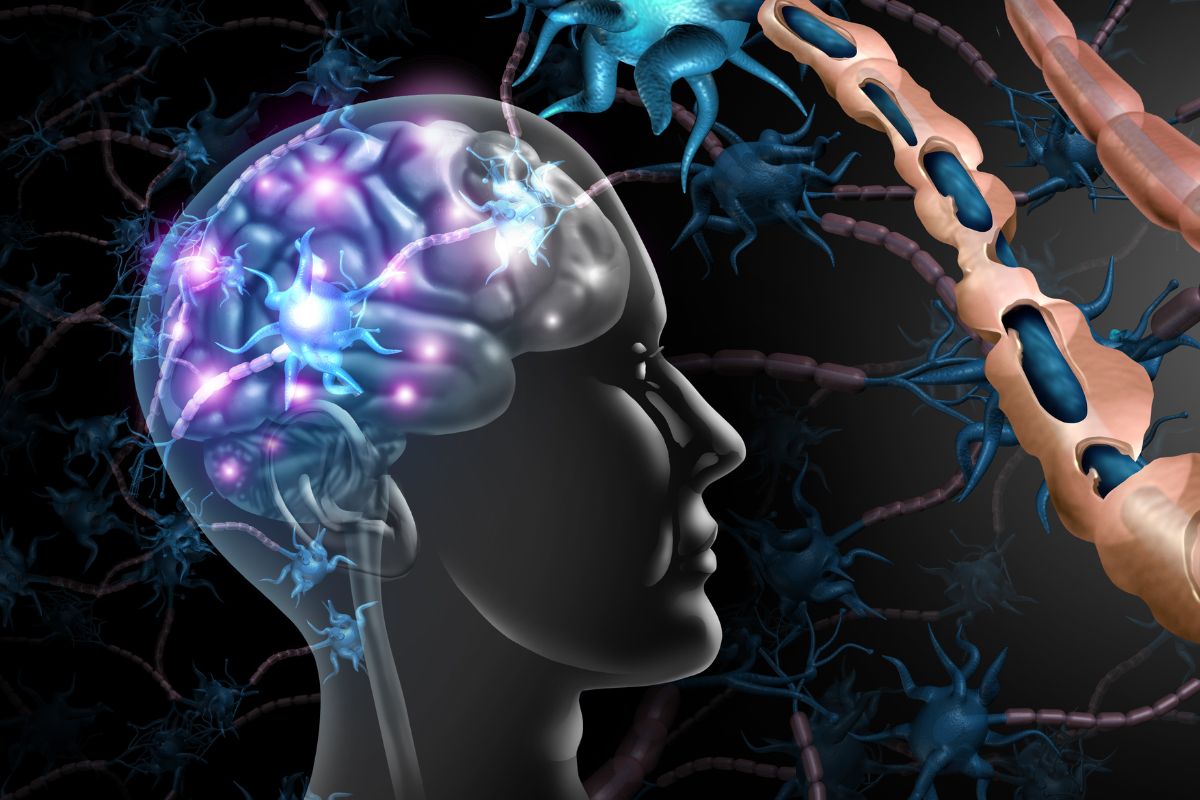When you visit a doctor, you assume they’re giving you the best and most accurate information possible. Usually, that’s true — but misdiagnoses happen. In fact, diseases often misdiagnosed can cause 800,000 deaths and serious disabilities in the United States alone. Misdiagnosed medical conditions can be very dangerous indeed, especially if treatment is delayed or put off.
Doctors don’t deliberately misdiagnose conditions…but errors like misunderstanding charts and symptoms, as well as confusion about a person’s overall health, can cause serious errors. Misdiagnosis can cause serious physical pain, worsening disease symptoms, mental anguish, and even death. The most commonly misdiagnosed diseases are particularly worrisome when missed.
Lyme Disease
Lyme disease is unique because it’s both overdiagnosed — often confused with migraine disorder and fibromyalgia — and not diagnosed enough! Often, doctors diagnose diseases like arthritis, chronic fatigue syndrome, cases of flu, and autoimmune disorders instead of Lyme disease….which is a real problem. Thankfully, understanding this disease can help you get the support you need.
Symptoms and Clinical Presentation
Of all the diseases doctors get wrong, Lyme disease is often the trickiest to spot early. A few days after infection, you’ll develop a rash (where the tick that spreads this disease bit you) and develop a fever, headache, tiredness, stiff joints, muscle pains, and swollen lymph nodes. Understandably, doctors don’t jump to the conclusion that a person has Lyme disease based on these symptoms.
As this condition spreads, you can develop more serious symptoms, such as heavy rashes, excessive immune system activity in the heart (irregular heartbeats), pain and swelling in the eye, and pain throughout the body. Unfortunately, left untreated, this condition can become a very painful problem indeed, and it is typically important to diagnose ASAP to stay safe.
Diagnostic Challenges and Testing Limitations
Here’s something people with Lyme disease have heard from their doctor: “Your state doesn’t have Lyme disease, you’re fine.” Unfortunately, that attitude causes many physicians to ignore the possibility of this condition!
Similarly, this disease requires a two-step testing process that may not detect Lyme disease because antibodies may take weeks to develop! So even if your doctor believes you have this condition, a test taken too early in your infection could come up negative and cause misdiagnosis.
Importance of Early Detection and Treatment
If left unmanaged, Lyme disease could cause acrodermatitis chronic atrophicans: a mouthful, we know. However, this disease is very serious: it causes discoloration and swelling on the skin and can even cause damage to tissue and joints. It may persist for months and even years after infection. Misdiagnosis can cause this condition to spread and worsen exponentially.

Fibromyalgia
Fibromyalgia is among the diseases often misdiagnosed because its symptoms overlap so much with other diseases. For example, people with lupus, multiple sclerosis (more on that later), rheumatoid arthritis, thyroid disease, anemia, and even type 2 diabetes may get diagnosed with fibromyalgia — and vice versa. All these misdiagnosed medical conditions are very serious.
Common Symptoms and Diagnostic Criteria
Previously, doctors used an 18-pain-point system to diagnose this condition. Now, they focus on widespread pain in areas like the left upper region, right upper region, lower left region, lower right region, and the axial region. Blood tests work to rule out other common diseases and fine-tune your diagnosis…symptoms must persist for at least three months before this condition is diagnosed.
Differential Diagnosis and Misattributed Symptoms
The challenging thing about diagnosing fibromyalgia is the persistence of other symptoms — including headaches and back pain — that might be misattributed. Like other commonly misdiagnosed diseases, fibromyalgia is a bit vague: it’s typically defined as the cause of chronic pain when NO OTHER conditions can be used to explain it. That often makes diagnosis a bit scattershot.
Multidisciplinary Approach to Management
Catching fibromyalgia (or diseases that mimic it) requires doctors to take a multidisciplinary approach. By that, we mean they must focus on a person’s individual needs and symptoms…and not ignore other possible causes. Diagnostic criteria that focus on physical and emotional pain, as well as long-term therapy, can ensure that you get great results and recover more efficiently.

Multiple Sclerosis (MS)
Multiple sclerosis is a degenerative neurological disorder that causes a broad range of symptoms, depending on where it occurs. Its progression (which often varies in speed based on many factors) can be misattributed to fibromyalgia (remember that?), neuromyelitis optica spectrum disorder, small vessel ischemic disease, and other conditions. Tragically, this might delay treatment for years.
Clinical Features and Disease Progression
When it comes to diseases doctors get wrong, MS is perhaps the most serious. MS can cause minor symptoms at first, such as pain in various parts of the body or even numbness. As it progresses, though, these symptoms will worsen…and some might even lose function in critical parts of the body. Eventually, MS is fatal: but catching it early can slow progression and prolong a person’s life.
Challenges in Differential Diagnosis
The major challenges of diagnosing MS lie in a doctor’s perception, i.e., whether they’re going to jump to the conclusion that a person’s symptoms are related to this disease. Since so many other conditions cause MS-like results, it’s one of the most commonly misdiagnosed diseases in the world. Most are going to ignore the possibility until it’s too late and leave you in real danger.
Importance of Specialist Evaluation and Advanced Imaging
If you feel like you have multiple sclerosis and want to make sure this isn’t one of those diseases doctors get wrong with you, talk to a specialist to get imaging support. Specialized imaging techniques (like MRIs and various brain scans) can detect whether you have multiple sclerosis and make it easier for you to get the detailed and accurate diagnosis that you need to be safe.
Celiac Disease
Celiac disease is one of those diseases often misdiagnosed because of its nonspecific symptoms. In other words, it often presents itself differently in varying people, including causing irritable bowel syndrome and even chronic back pain. As a result, people may get treatment for other conditions when celiac is to blame…letting this disease worsen and become even more troubling.
Clinical Manifestations and Subclinical Presentations
Celiac disease causes an intolerance to gluten (an important protein found in wheat) that can cause the immune system to attack the digestive tract. When this happens, the small intestine can get damaged and cause long-term health symptoms. It’s typically diagnosed by watching for iron deficiency and even osteoporosis, though signs may vary in people based on their body’s reactions.
Challenges in Diagnosis: Serological Testing and Biopsy Interpretation
Utilizing proper serological testing and biopsies can help doctors quickly and efficiently diagnose celiac disease. Unfortunately, poor biopsy interpretation is possible…which could leave you in a very challenging situation. Your doctor might not notice signs of damage in the intestine, assume you’re safe, and resist further testing, even if you’re sure that you have celiac disease.
Importance of Gluten-Free Diet and Long-Term Management
People with celiac disease must adopt a gluten-free diet…for the rest of their life. That’s a major challenge for many (often requiring psychological support and education with family members) to ensure you stay outbreak-free. Long-term recovery also includes working with a doctor for regular follow-up care and testing to make sure your symptoms aren’t worsening and causing serious issues.
Thyroid Disorders
Thyroid diseases are among the most misdiagnosed medical conditions for a few reasons. Often, doctors don’t check thyroid levels (due to nonspecific or diverse symptoms) or run a comprehensive panel on symptoms. Commonly misdiagnosed diseases like hypothyroidism and hyperthyroidism are often so hazy with symptoms that physicians struggle to spot them.
Thyroid Dysfunction and Endocrine Regulation
A properly operating thyroid controls your metabolism and growth and helps by secreting various types of chemicals and endocrines. When these levels get unbalanced, you might develop weight gain, weight loss, heart damage, fatigue, and excitability. For such an important gland, experts rarely consider it when diagnosing conditions, making it one of the common diseases doctors get wrong.
Clinical Presentation and Laboratory Evaluation
When diagnosing thyroid conditions, doctors typically utilize a series of blood tests that examine your endocrine levels. Through extensive laboratory evaluation, they can determine what’s affecting you and find a treatment. Typically, though, the diverse clinical presentation of this disease (symptoms can be wildly varied) makes it harder for physicians to fine-tune their search.
Importance of Comprehensive Thyroid Panel and Specialist Consultation
If you or your doctor believe that thyroid conditions are affecting you, a full thyroid panel with a specialist is important. These experts know the full battery of tests that can determine malfunction and can properly diagnose what’s happening. Don’t expect a generalist to have that kind of insight: specialist help is essential if you want to get the proper diagnostic help you deserve.
Endometriosis
Painful when it develops and hard to diagnose, endometriosis occurs when endometrial tissue starts growing outside the uterus. Spreading throughout the body, this condition can cause an extensive buildup of tissue that can be very painful. Unfortunately, it’s hard to pinpoint because it’s so often similar to other types of diseases, meaning it might not get spotted until far in its progression.
Symptoms and Disease Progression
Endometriosis can cause difficulty “going” to the bathroom, painful bowel movements, sharp pains in the pelvis area, and even problems controlling your bladder. It moves through four stages: the first two are mild and leave behind minimal scar tissue in the ovaries, fallopian tubes, and uterus. By stages three and four, deeper growths have developed and could cause very severe problems.
Challenges in Diagnosis: Laparoscopic Evaluation and Imaging Modalities
The thing about endometriosis is that laparoscopic evaluation and imaging technology can easily catch this condition, even early in development. The problem? Doctors don’t automatically jump to the conclusion that this disease is to blame for your pain. As you can imagine, that’s a problem: you might go weeks, months, or even years without getting a proper diagnosis and treatment.
Importance of Multidisciplinary Care and Patient Advocacy
Multidisciplinary therapy focused on patient advocacy (i.e., listening to what women have to say) could make endometriosis one of those diseases often misdiagnosed that doctors stop missing. Teaching women about misdiagnosed medical conditions like this can help them better understand what could be affecting them and make it easier for them to choose therapy and specialists.
Chronic Fatigue Syndrome (CFS)
Doctors admit that chronic fatigue syndrome (CFS) is a mystery. Among the most commonly misdiagnosed diseases, CFS lacks definitive diagnostic tests. Often, physicians either diagnose it for lack of a better explanation or miss it entirely due to nonspecific symptoms. That makes it one of those diseases doctors get wrong that causes a lot of pain and suffering when missed by doctors.
Clinical Features and Diagnostic Criteria
According to current diagnostic rules, CFS is likely present if it lasts for six months, comes paired with fatigue, is profound, newly onset, not the result of ongoing exertion, and not alleviated by rest. It also features post-exertional malaise (PEM) or symptoms that worsen after heavy activity and sleep that feels unrefreshing. It can also cause cognitive impairment and orthostatic intolerance.
Challenges in Differential Diagnosis and Management
Sadly, CFS often gets missed because it’s tricky to diagnose: there are no tell-tale “smoking gun” symptoms, no blood test that catches it. That means physicians might diagnose other conditions (such as depression, the most commonly mistaken disease) for CFS. Unfortunately, that can cause this problem to worsen and make it hard for a person to bounce back from it properly.
Importance of Symptom Management and Supportive Care
The complex causes of CFS and its persistent symptoms require you to manage your symptoms properly and get hands-on, supportive care. For example, you might need to work with a pain-management team that provides adaptive treatments (including physical therapy and medications) that can reduce your suffering. Care should adapt to your needs…and help you thrive.
